You probably didn't know that paper comes in many forms, each with unique uses and benefits. Origami paper is thin and colorful, perfect for intricate designs. Rice paper shines in culinary and artistic applications due to its translucency. Then there's cardstock, ideal for business cards and invitations. Eco-friendly options like bamboo and hemp paper promote sustainability without sacrificing quality. Additionally, recycled paper saves resources and reduces waste. Each type serves its purpose, enhancing creativity and protecting the environment. Discover the fascinating details about these paper types that can transform your projects!
Key Takeaways
- Diverse Uses: Various paper types, like origami and rice paper, serve unique purposes beyond standard writing paper, enhancing creativity and functionality.
- Eco-Friendly Options: Alternatives like bamboo and sugarcane paper offer sustainable choices, reducing environmental impact without sacrificing quality.
- Recycling Benefits: Recycling paper saves significant water and energy, emphasizing the importance of sustainable practices in paper production.
- Innovative Technologies: Advances in recycling methods, such as enzyme treatments, enhance the quality of recycled paper products, promoting a circular economy.
- Environmental Impact: The paper industry contributes to deforestation and pollution, highlighting the need for responsible consumption and sustainable sourcing.
Unexpected Paper Types Explained
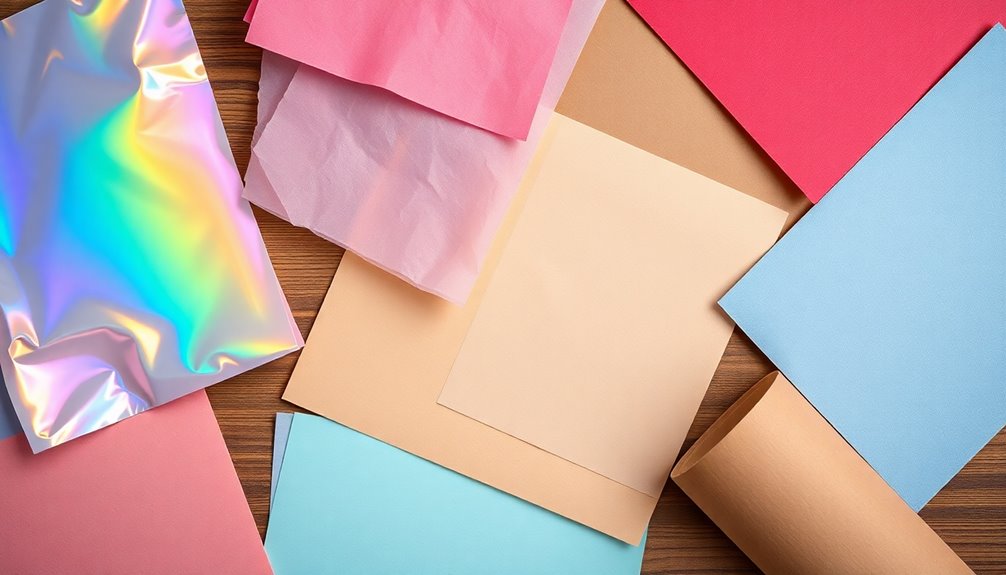
When you think of paper, you might picture plain printer sheets or notebook pages, but there's a whole world of unexpected paper types out there waiting to be explored. For instance, origami paper is specifically designed for folding. It's thinner and comes in various colors and patterns, making it perfect for intricate designs. If you're looking for something with a unique texture, rice paper is a great option. Made from the pith of the rice plant, it's not only used in Asian cuisine for wrapping food but also for calligraphy and painting due to its translucency.
Then there's cardstock, which is heavier than standard paper. You might use it for business cards or crafting projects because it provides a sturdier surface for printing. Lastly, consider handmade paper, crafted from natural fibers like cotton or hemp. It boasts a distinct texture and is often chosen for premium stationery and art projects, showcasing unique variations in color and thickness. Exploring these unexpected paper types will add new dimensions to your creative projects and inspire you to think outside the box!
Paper Types and Their Uses
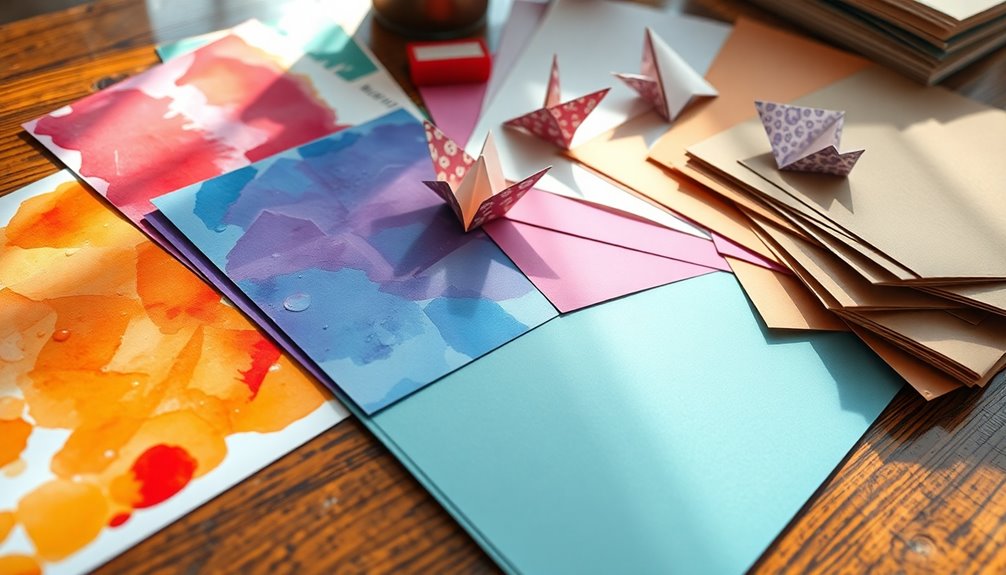
Exploring the various types of paper reveals how each serves specific purposes in both everyday use and creative endeavors. Bond paper, known for its durability and weight, is perfect for letterhead and stationery. You'll appreciate its ability to convey professionalism in your correspondence. On the other hand, cardstock is your go-to choice for business cards and invitations. Its thicker, sturdier feel—ranging from 65 to 110 lb—adds a touch of quality to your projects.
If you're looking for an eco-friendly option, recycled paper is a fantastic choice. Made from post-consumer waste, it's versatile enough for office printing and packaging, helping you reduce your environmental impact.
For artistic pursuits, watercolor paper is essential. Specifically designed for watercolor painting, this paper absorbs paint without warping, allowing you to create stunning artwork. Its weight ranges from 190 to 800 gsm, providing the right foundation for your masterpieces.
Eco-Friendly Paper Alternatives
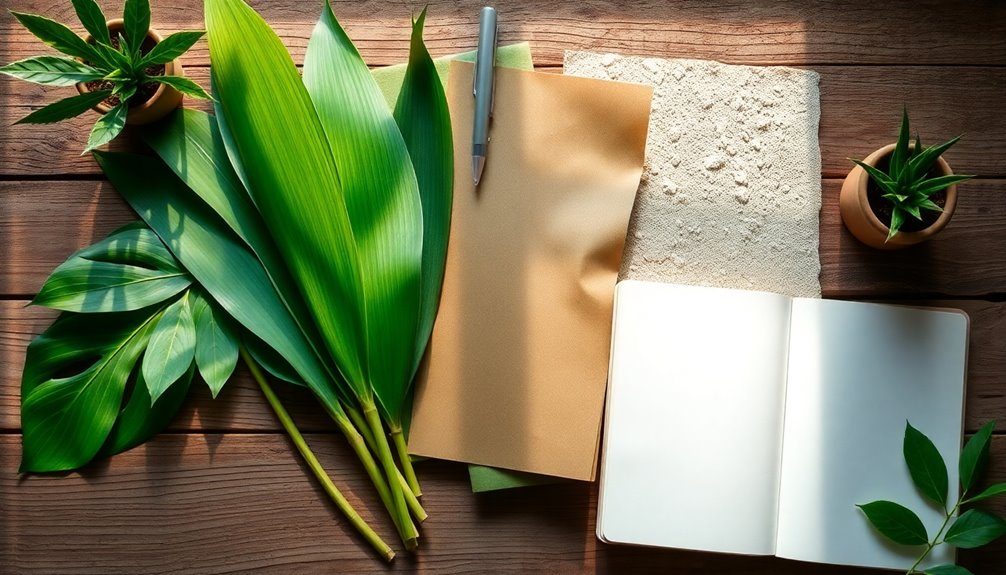
Eco-friendly paper alternatives offer sustainable options that benefit both the environment and your projects. One standout choice is bamboo paper, an eco-friendly alternative that grows rapidly and requires minimal water with no pesticides. It's a fantastic option if you're looking for sustainability without compromising quality.
Another great option is recycled paper. By choosing recycled, you reduce the need for virgin materials, saving around 24,000 gallons of water and 4,100 kilowatts of energy per ton produced. This makes a significant impact on resource conservation.
If you want something unique, consider sugarcane paper. Made from byproducts of sugar production, it's a renewable resource that helps minimize waste and provides a biodegradable alternative to conventional paper.
Don't forget about hemp paper, which boasts strength and durability. Hemp plants generate up to four times more fiber per acre than trees while also revitalizing soil health.
Finally, stone paper, made from crushed limestone and non-toxic resin, is another innovative choice. It's water-resistant and tear-resistant, using no trees and minimizing the carbon footprint during production. With these options, you can make a positive difference while enjoying quality materials.
Environmental Impact of Paper Production

The production of paper has significant environmental consequences that are often overlooked. You might not realize that the paper industry is responsible for about 26% of the world's deforestation. This alarming rate of deforestation disrupts ecosystems and threatens biodiversity. Additionally, producing just one ton of paper uses around 24,000 gallons of water, exacerbating water scarcity issues in many regions.
Moreover, the paper-making process emits approximately 75% of the air pollutants generated by the forest products industry, which can negatively impact air quality and public health. These facts highlight the substantial environmental impact of paper production that we often ignore.
However, there's a silver lining: recycling paper can save up to 60% of the energy needed to produce new paper from virgin materials. This not only reduces carbon emissions but also helps lessen the demand for raw materials, thus mitigating deforestation. To further combat these issues, supporting sustainable forestry practices and certifications, like FSC (Forest Stewardship Council), ensures responsible sourcing and management of forest resources. By making informed choices, you can contribute to reducing the environmental impact of paper production.
Innovative Paper Recycling Initiatives
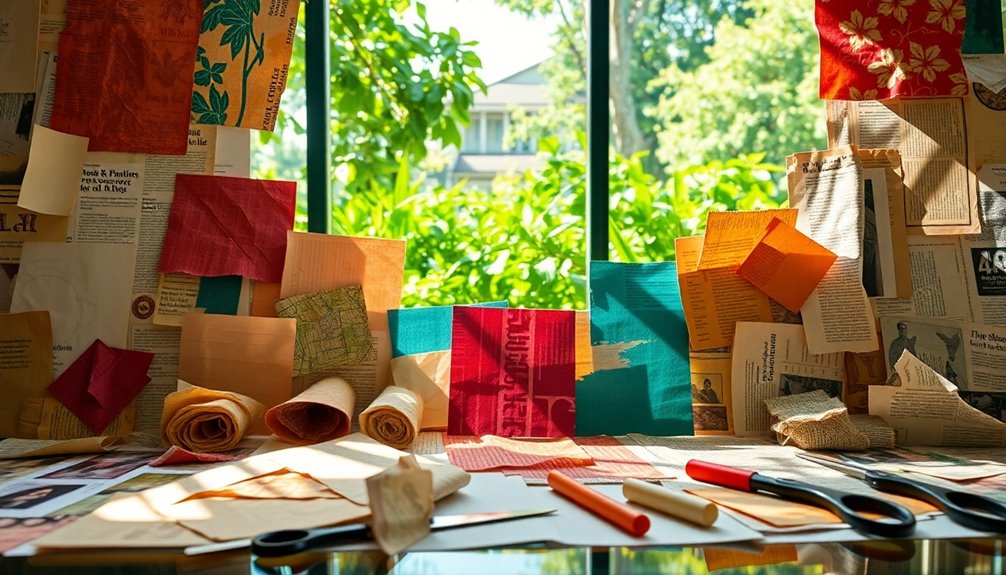
Recycling paper has become a crucial step toward sustainability and resource conservation. Innovative paper recycling initiatives are reshaping how we view waste. By implementing efficient recycling processes, companies can now recycle up to 90% of paper waste, significantly cutting down landfill contributions and preserving natural resources.
One of the most exciting developments is the use of recycled paper fibers to create new products, like packaging materials and construction supplies. This promotes a circular economy and minimizes environmental impact. The closed-loop recycling method plays a vital role in this process, allowing paper to be recycled multiple times—up to seven—without losing its strength or durability.
In 2021, the global paper recycling rate reached about 58%, showcasing the effectiveness of these initiatives and consumer participation in reducing paper waste. Innovative technologies, such as enzyme-based treatments and pulping alternatives, are also enhancing recycling processes, leading to higher-quality recycled paper products. These advancements not only boost efficiency but also contribute to a greener planet. By participating in these initiatives, you're helping to create a sustainable future, one sheet of paper at a time.
Paper's Surprising Historical Uses
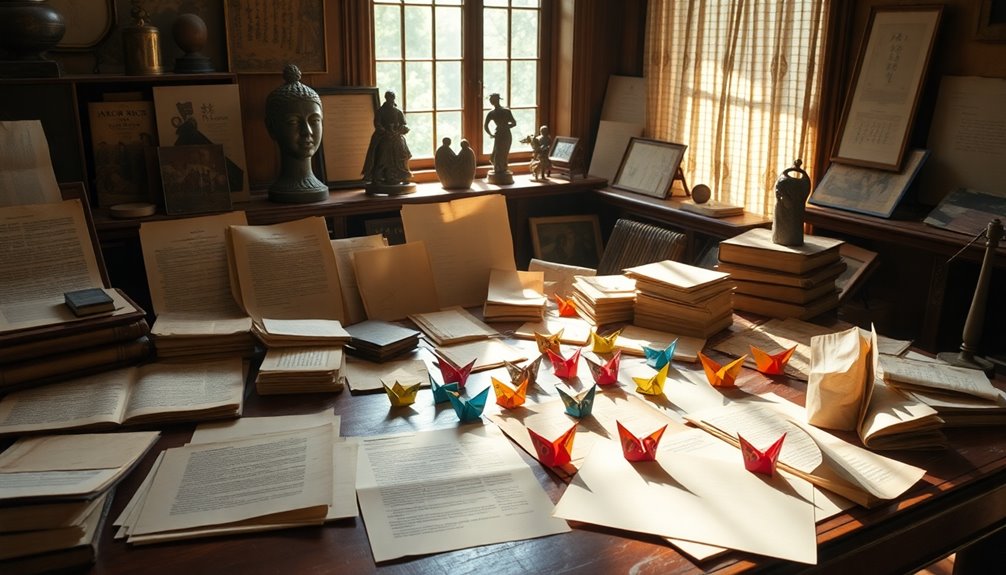
Paper's fascinating history reveals its many surprising uses beyond mere writing. The ancient Egyptians were among the first to utilize papyrus, crafted from the papyrus plant, for record-keeping and communication as early as 3000 BC. Fast forward to medieval China, where innovative minds invented paper from fibers like hemp and mulberry trees by the 2nd century AD. This significant advancement transformed how people recorded and shared information.
Interestingly, paper's role extended to the world of finance as well. During the Tang Dynasty (618–907 AD), the Chinese introduced the use of paper for banknotes, laying the groundwork for modern currency systems that we rely on today.
In more recent history, during World War II, the U.S. government printed "Victory" paper, made from recycled materials, to promote conservation efforts and support the war. This not only illustrated paper's versatility but also demonstrated its critical role in societal needs.
Additionally, in the 19th century, paper found its way into homes as wallpaper and early packaging materials, showcasing just how diverse this indispensable resource truly is.
Frequently Asked Questions
What Are Some Mind Blowing Science Facts?
You'll be amazed by some mind-blowing science facts! Did you know your brain generates enough electricity to power a small light bulb? Or that a sugar-cube-sized portion of a neutron star weighs about 6 billion tons? Think about this: a million Earths could fit into the Sun, showcasing the solar system's vastness. Plus, octopuses have three hearts, which help them thrive in their underwater world. Isn't nature fascinating?
What Subjects Are No Longer Taught in School?
You might be surprised to learn that some essential subjects are fading from school curricula. Cursive handwriting instruction is nearly extinct, with only 15% of schools teaching it. Home economics classes, which once equipped you with vital life skills, are now offered in just 10% of high schools. Moreover, only 17 states require personal finance courses, and comprehensive sex education isn't universally mandated, leaving students with gaps in crucial knowledge for adulthood.
What Are Some of the Most Mind Blowing Facts?
You might be surprised to learn that honey never spoils. Archaeologists have found pots of honey in ancient Egyptian tombs that are over 3,000 years old and still edible! Another mind-blowing fact is that octopuses have three hearts and blue blood. Plus, a day on Venus lasts longer than a year on Venus due to its slow rotation. These fascinating truths show how diverse and strange our world really is!
What Are 20 Science Facts for Students?
You'll be amazed by these 20 science facts! Did you know there are more than three states of matter? Plasma and Bose-Einstein condensate are fascinating too. Your brain generates enough electrical activity to power a small light bulb, showcasing its complexity. Also, a million Earths could fit inside the sun! Lastly, giraffes are 30 times more likely to get struck by lightning than you are. Science is full of incredible surprises!









